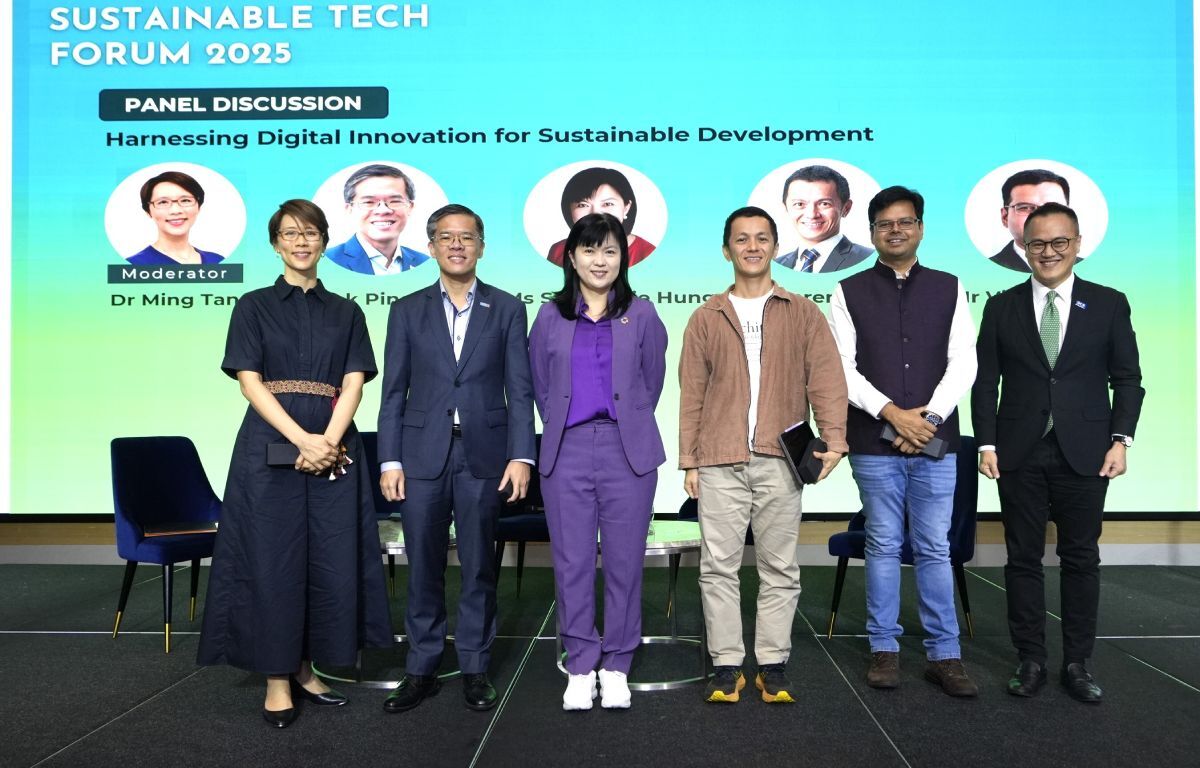
The digital economy in Southeast Asia is expanding at an unprecedented rate, driven by rapid technological advancements and increasing internet penetration. Digital transformation of key sectors including financial services, e-commerce, online travel, food delivery, and transformation have led to double-digit growth in regional gross merchandise value transactions since 2022. However, this surge in digitalisation also raises sustainability concerns, particularly regarding energy consumption and environmental impact. The ICT sector is estimated to account for approximately 3-4% of global greenhouse gas emissions, with AI-driven innovations further increasing energy demand. As Southeast Asia embraces AI and emerging technologies, it faces a critical challenge, specifically on aligning digital transformation with sustainability goals while ensuring inclusive and responsible technological growth.
Despite these challenges, digital technologies have immense potential to drive sustainable development. Innovations in AI, blockchain, and the Internet of Things (IoT) are reshaping industries, optimising energy use, and enabling more efficient resource management. The application of AI in conservation efforts, such as deforestation mapping and biodiversity monitoring, illustrates how technology can contribute to climate resilience. Additionally, digital public infrastructure initiatives, such as national ID systems and unified payment platforms, enhance governance and drive sustainable economic inclusion. By fostering multi-stakeholder collaboration, governments, businesses, and civil society can leverage digital innovation to accelerate the transition to a green economy.
Amidst this backdrop, the Tech for Good Institute moderated a panel at the Sustainability Tech Forum 2025 on Harnessing Digital Innovation for Sustainable Development. The panel brought together diverse stakeholders to explore the intersection of digitalisation and sustainability. The discussion covered how organisations and businesses are being accountable for the environmental impacts of their operations. It also covered the use of digital technologies to advance development goals or digital sustainability.
Moderator and Panellists
- Vivek Kumar, Chief Executive Officer, World Wild Fund Singapore
- Stephanie Hung, Chief Information Officer, Asian Development Bank
- Ping Soon Kok, Chief Executive Officer, Singapore Business Federation
- Terence Chia, Assistant Chief Executive (Corporate), IMDA
- Ming Tan, Founding Executive Director, Tech for Good Institute
Key Takeaways
1. Digitalising the small and medium enterprises (SMEs) is crucial towards green transition.
Digital transformation must integrate sustainability principles at every stage. SMEs in the ASEAN region play a crucial role in the digital economy, comprising over 90 percent of all businesses. In Singapore, 9 in 10 SMEs acknowledge the importance of digital transformation. SMEs also allocate around 11% of their budget to information and communications technology (ICT) costs. However, challenges remain, including of integrating sustainability practices, small pool of ICT talents, and uncertainty in starting their digital transformation journey. On the sustainability front, only 30% of small and medium-sized enterprises ( ) in the region have taken similar steps. Businesses cite financial constraints, talent shortages, and time limitations as key barriers to sustainability efforts. The discussion noted that current approach to the digital and green transitions remain siloed, akin to separate swim lanes. To be more effective, efforts must be intertwined similar to the strands of a DNA.
2. Digital technologies promote positive environmental impact at scale.
Emerging technologies such as AI and IoT are powerful tools for environmental monitoring and resource optimisation. For instance, WWF Singapore designed Wildlife Insights, an AI-powered conservation tool, which helps track biodiversity and prevent deforestation. Similarly, the ADB designs digital twins simulation technologies for infrastructure and road planning, enabling governments to simulate climate impact scenarios and optimise resource allocation. IoT-based smart grids are also optimising energy distribution, reducing waste and supporting the transition to renewable energy sources. Lastly, blockchain technology is being leveraged to improve supply chain transparency, ensuring responsible sourcing and reducing environmental footprints.
3. Policy innovation is essential for balancing digital and green transitions.
Governments play a crucial role in shaping regulatory frameworks that encourage sustainable digital and nology adoption. IMDA discussed how policies like the SG Green Plan and Green ICT Strategy are driving Singapore’s transition to a greener digital economy. Public-private collaboration is needed to implement green procurement standards, promote circular economy models, and scale climate-smart investment. Capital and financing innovation is also critical for scaling sustainable tech solutions. There is a need to accelerate investments in climate finance and green technology to meet sustainability targets. New financing mechanisms must also be designed to ensure an integrated digital innovation, such as impact investing and nature-based solutions. Public-private partnerships can also support climate-resilient infrastructure projects through digital finance and data-driven decision-making.



